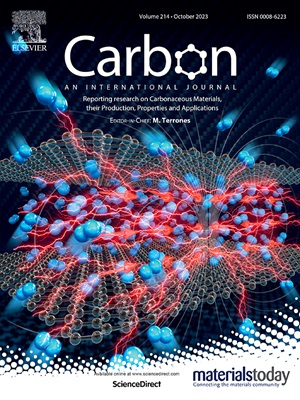Dual-element synergy driven breakthrough in sodium storage performance of phenolic resin-based hard carbon
IF 10.5
2区 材料科学
Q1 CHEMISTRY, PHYSICAL
引用次数: 0
Abstract
The inherent kinetic limitations of Na+ storage in hard carbon anodes plague the advancements in energy density for sodium-ion batteries. Conventional mono-heteroatom doping approaches, constrained by unilateral electronic modulation, fail to synergistically address the dual challenges of creating adsorption-active sites and enhancing ionic diffusion kinetics. Herein, the boron-phosphorus co-doped hard carbon microspheres (BPHCS) were synthesized through a copolymerization and crosslinking reaction. The combined effects of P–O and P–C bonds, along with boron compounds (BC3, BC2O, BCO2) alter the microcrystalline structure of hard carbon, introduce additional Na+ storage sites, and establish the n/p-type heteroatom synergy, creating complementary electron-hole transport pathways in hard carbon. The BPHCS exhibited a reversible capacity of 344 mAh g−1 at 0.05 A g−1 and maintained 174 mAh g−1 after 5000 cycles at 5 A g−1, demonstrating superior rate performance and cycling stability. Furthermore, boron doping promotes the formation of graphite-like regions, enhancing the intercalation capability of Na+. GITT, ex-situ Raman, and XRD confirm that the sodium storage mechanism in hard carbon follows a "surface adsorption, interlayer intercalation, and nanopore filling" model.

求助全文
约1分钟内获得全文
求助全文
来源期刊

Carbon
工程技术-材料科学:综合
CiteScore
20.80
自引率
7.30%
发文量
0
审稿时长
23 days
期刊介绍:
The journal Carbon is an international multidisciplinary forum for communicating scientific advances in the field of carbon materials. It reports new findings related to the formation, structure, properties, behaviors, and technological applications of carbons. Carbons are a broad class of ordered or disordered solid phases composed primarily of elemental carbon, including but not limited to carbon black, carbon fibers and filaments, carbon nanotubes, diamond and diamond-like carbon, fullerenes, glassy carbon, graphite, graphene, graphene-oxide, porous carbons, pyrolytic carbon, and other sp2 and non-sp2 hybridized carbon systems. Carbon is the companion title to the open access journal Carbon Trends. Relevant application areas for carbon materials include biology and medicine, catalysis, electronic, optoelectronic, spintronic, high-frequency, and photonic devices, energy storage and conversion systems, environmental applications and water treatment, smart materials and systems, and structural and thermal applications.
 求助内容:
求助内容: 应助结果提醒方式:
应助结果提醒方式:


